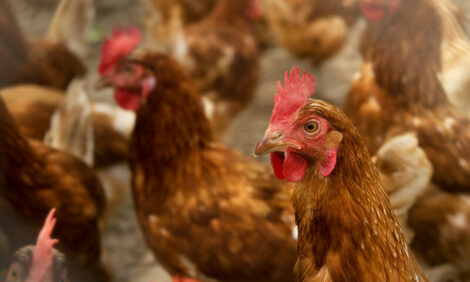



CME: September Inventory of Red Meat, Poultry in Cold Storage Higher Than a Year Ago
US - The combined inventory of beef, pork and poultry in cold storage at the end of September was 2.496 billion pounds, 2.2 per cent higher than the previous year and the largest amount of meat in cold storage since October 2002, reports Steiner Consulting Group, DLR Division, Inc.
Red meat and poultry inventories have increased at a faster than normal pace in the last two months. September freezer stocks rose 2.5 per cent from the previous month compared to an average 0.6 per cent M/M increase in the last five years. But this is not necessarily a bearish indicator.

The increase in production has bolstered US exports and this implies that more beef, pork and chicken needs to be accumulated in storage before it is loaded in containers for export. We continue to urge that the cold storage numbers need to be viewed in the broader context of expanding US trade. The large inventory in cold storage underscores the need for robust US meat protein demand, both from domestic and export sources in Q4.
Total beef inventories at the end of September were 487.8 million pounds, 6 per cent less than a year ago. Beef inventories in September rose 2.4 per cent compared to the previous month. In the last five years September beef stocks have increased by an average of 5.1 per cent from August levels. This is another indicator that beef demand remains in good shape, with product flowing into the marketplace rather than being diverted into cold storage.
The seasonal increase in pork inventories during September outpaced that of recent years. This may be viewed as bearish by futures when they open today but in our view some caveats are warranted. At the end of September there were 616.3 million pounds of pork in cold storage, a 7.1 per cent increase from the previous month.
In the last five years September stocks have increased by an average 3.6 per cent from August levels. Last year the m/m inventory increase was 5.5 per cent. But consider what drove the m/m increase in pork freezer stocks. Ham inventories increased 13.8 per cent in September compared to an average 7.8 per cent increase in the last five years. However, the increase followed a slower than normal inventory build during August.

One way to read this is that end users that normally put away hams in August delayed this in anticipation of increasing September supplies and lower prices. When we look at the Jul - Sep ham inventory build, 2017 ham freezer stocks are up 19 per cent compared to an average 28 per cent build in the last five years.
Last year, the ham build Jul/Sep was 32 per cent. When viewed in this context, the increase in ham cold storage stocks may not be as bearish as it first appears. Normally ham inventories are depleted in Oct-Dec as end users prepare for year-end holidays. Export demand remains a key wild card considering the large supply in cold storage and record pork production in Q4.
Pork belly inventories increased modestly in September when normally stocks decline. However, August pork belly stocks were minimal so there was not much stock that needed to be depleted. It will be critical for the pork market to see some bellies move into storage during Q4 in order to be better prepared for any Q1 retail features. Last year, a combination of aggressive features and limited cold storage inventories caused pork belly prices to rise sharply in Q1.
Chicken supplies remain burdensome. Disruptions from Hurricanes Harvey, Maria and Irma may have significantly impacted chicken trade in September and caused product to be backed up in storage. Underscoring this, leg quarter inventories jumped 14.5 per cent for the month.












